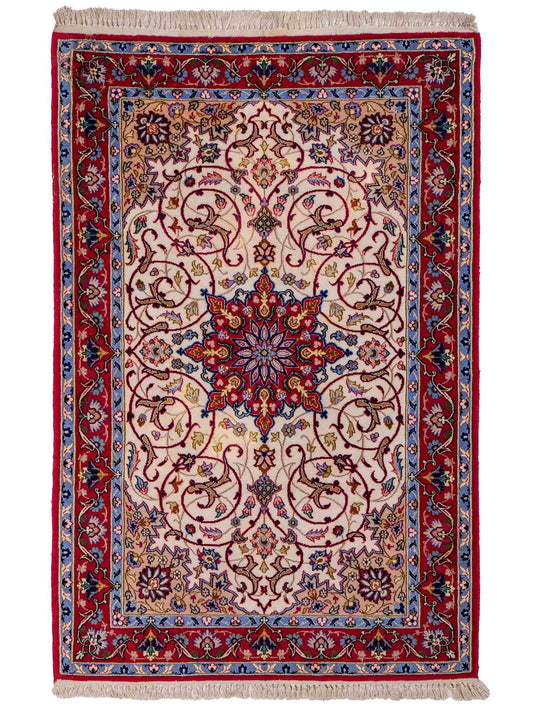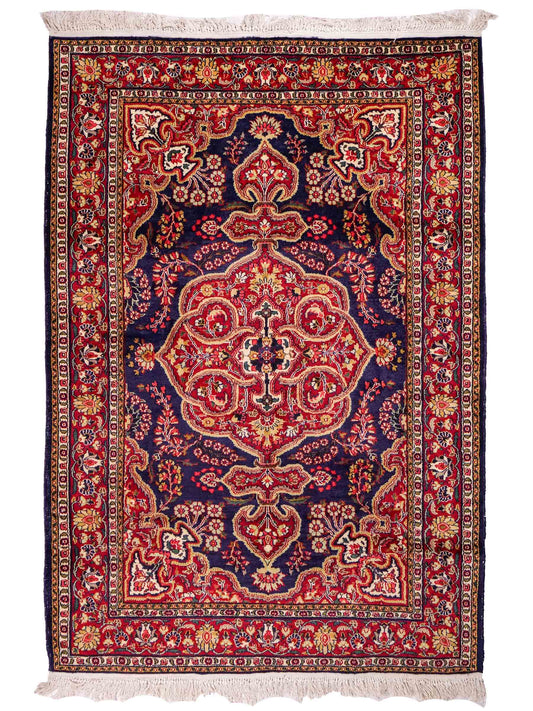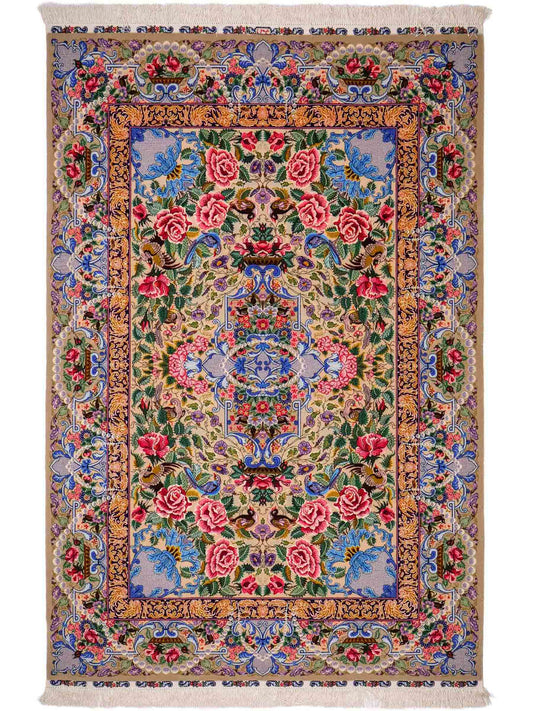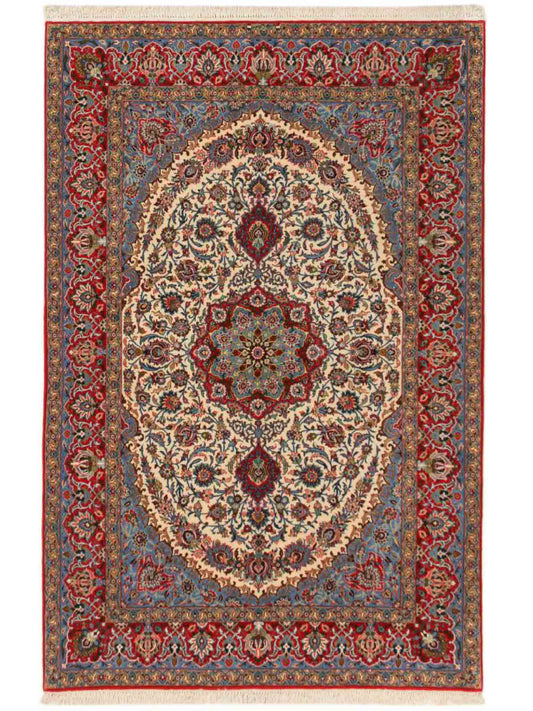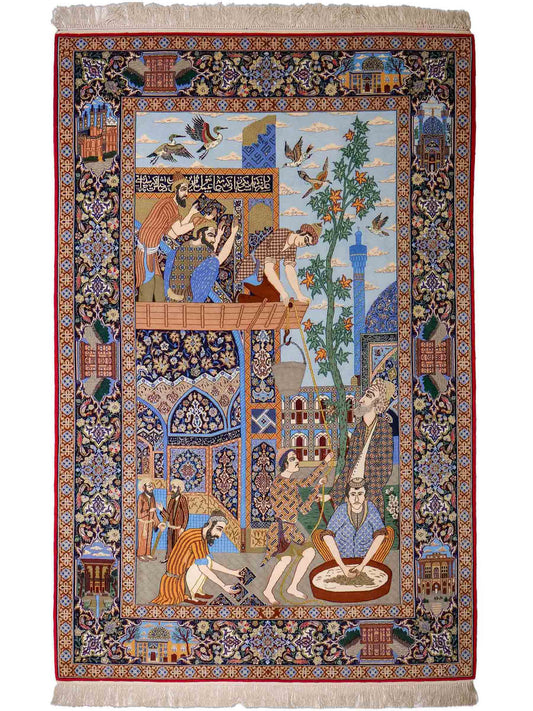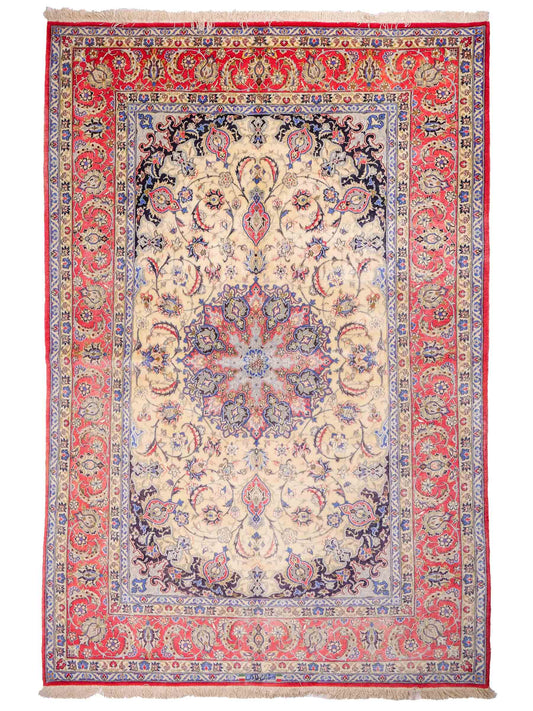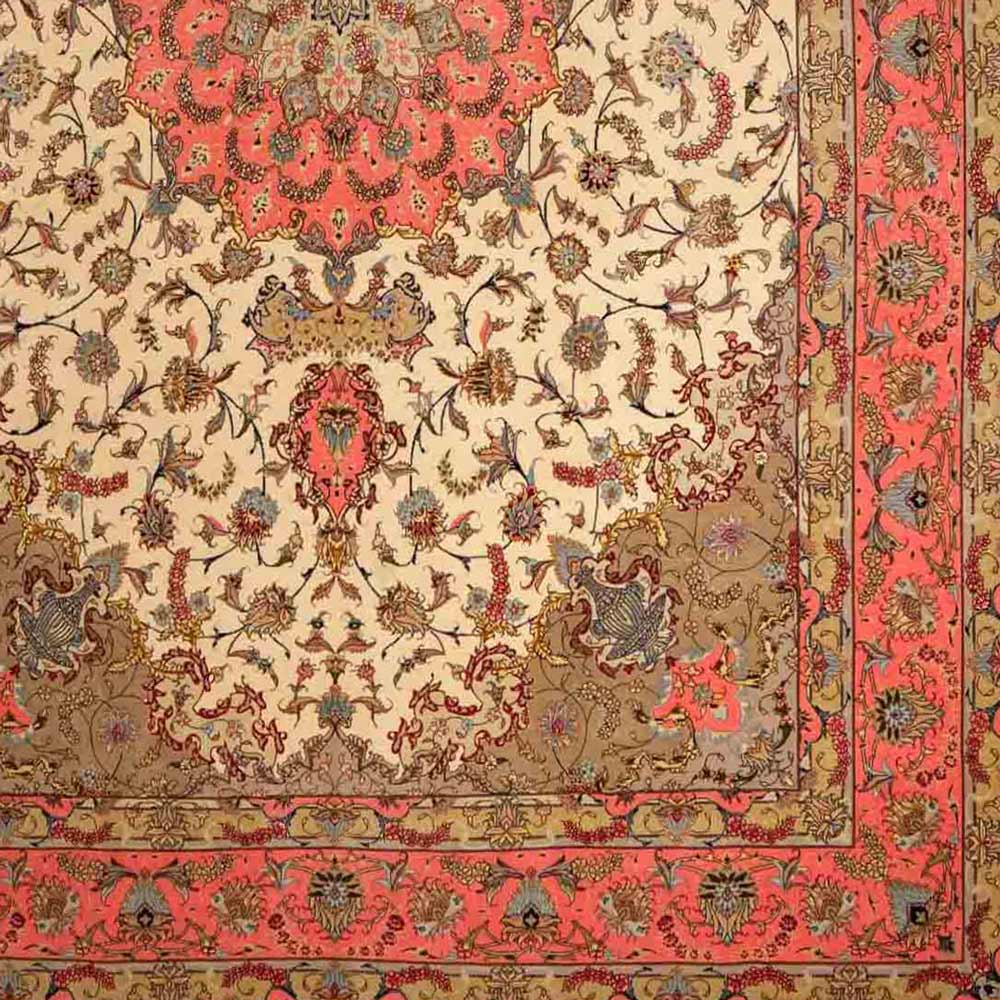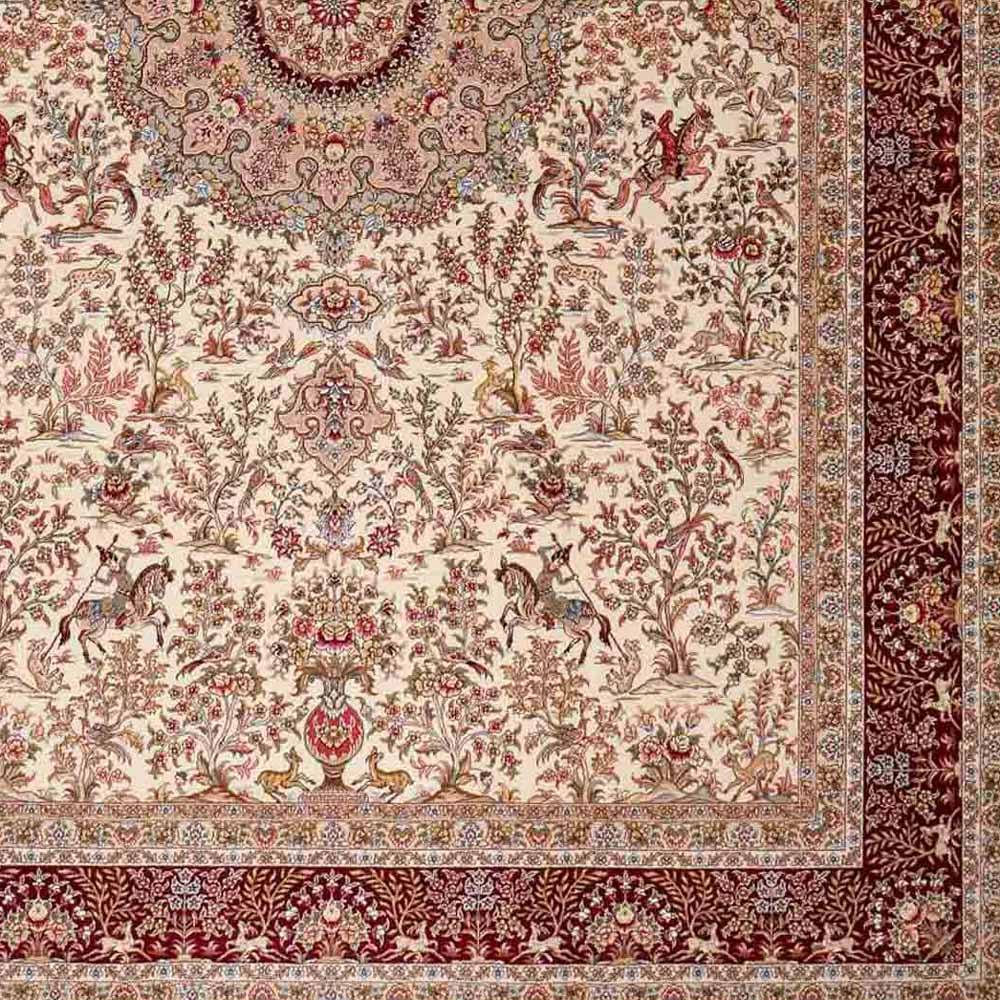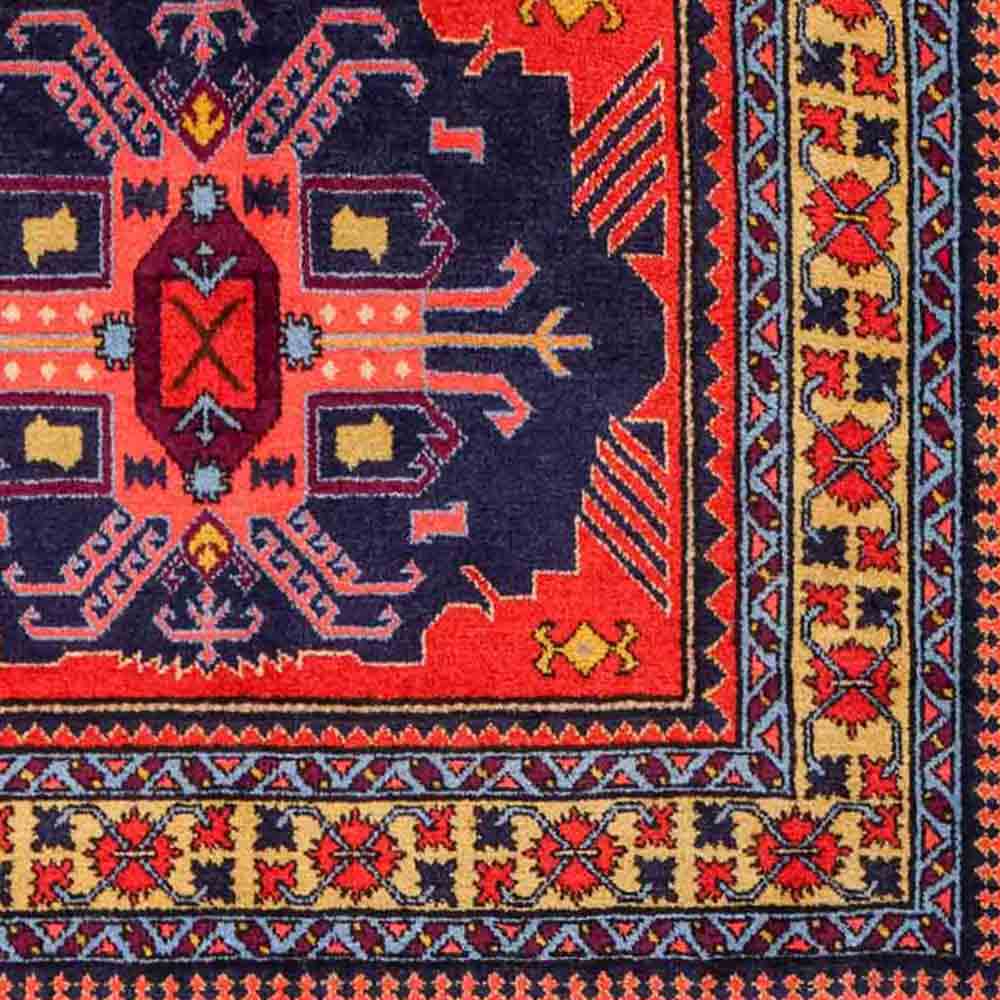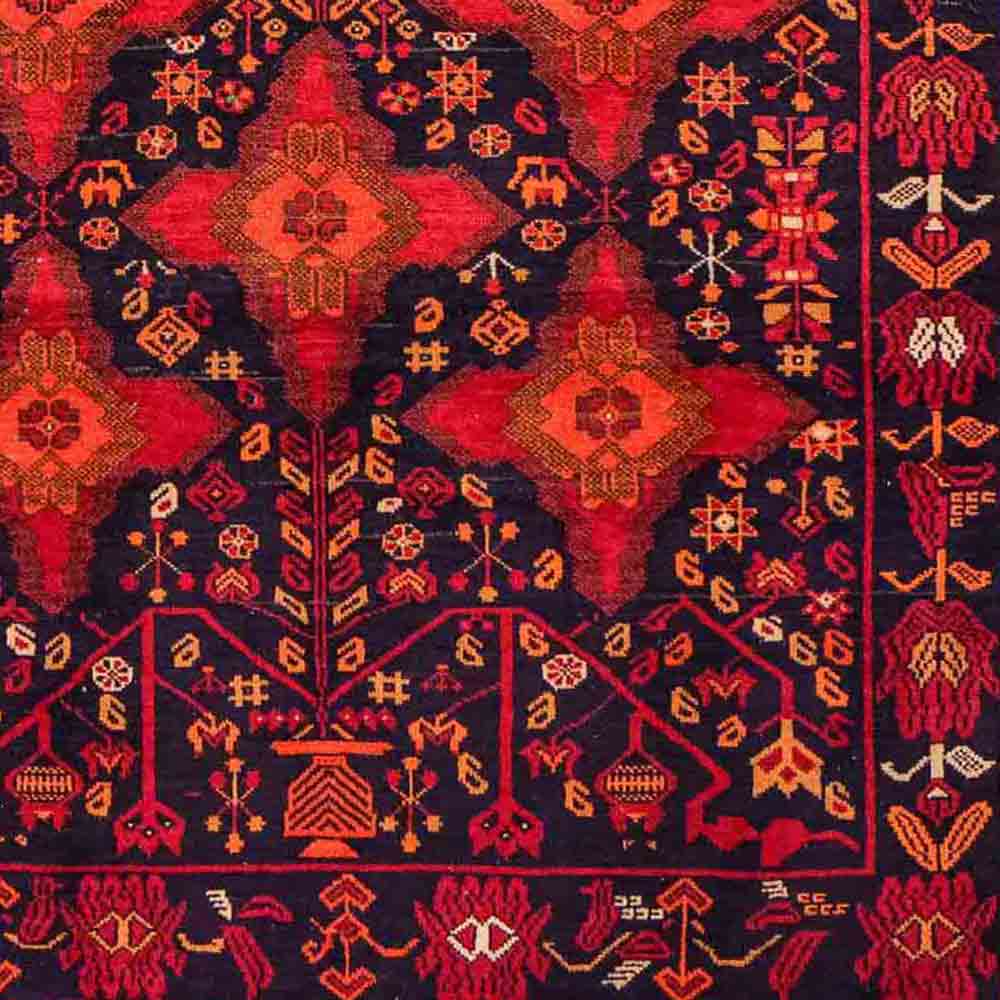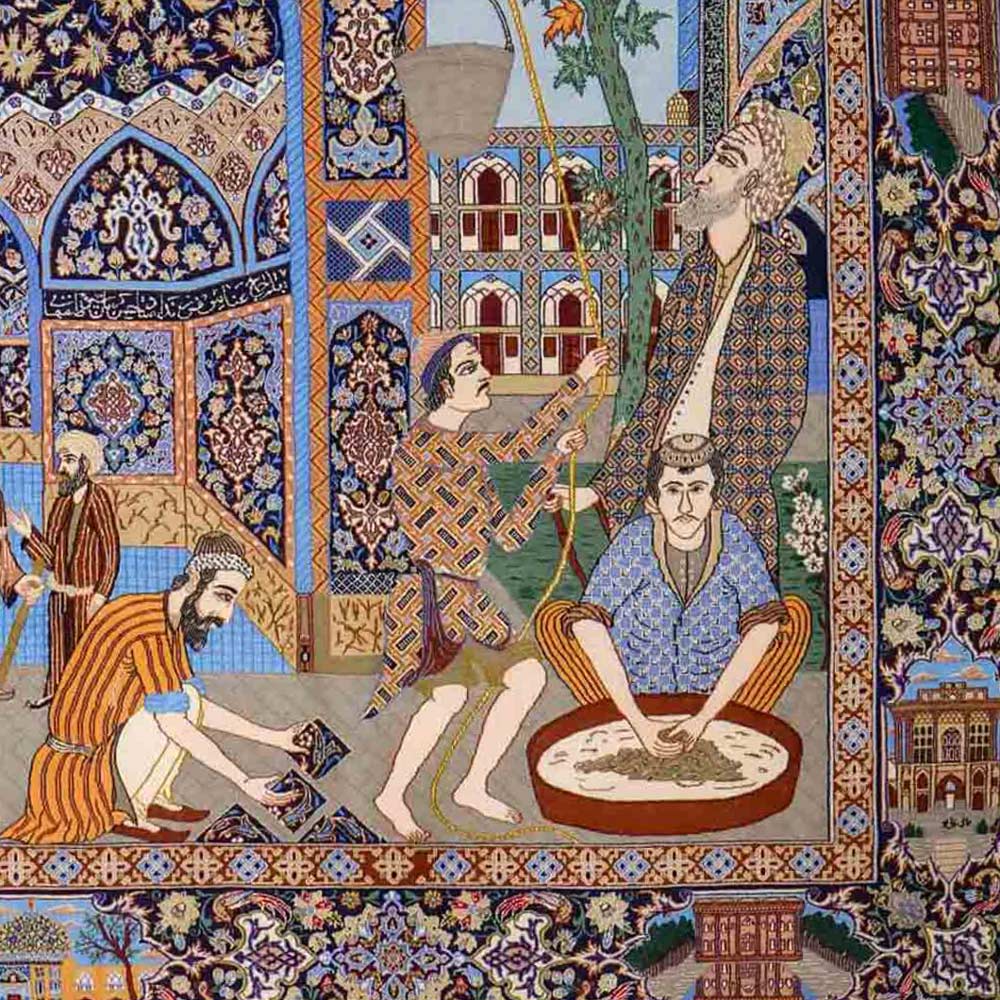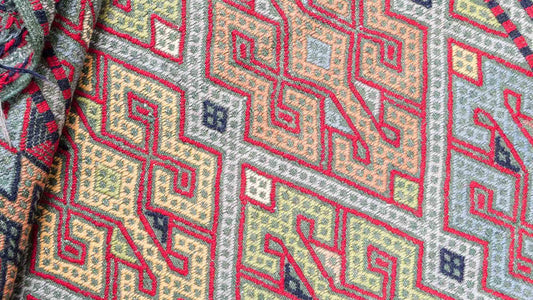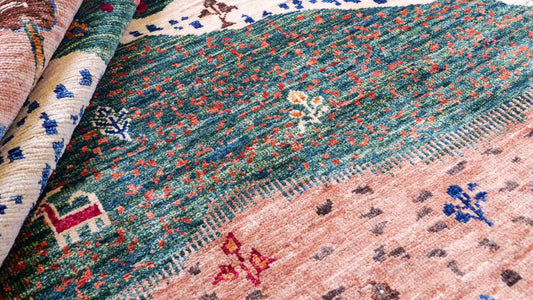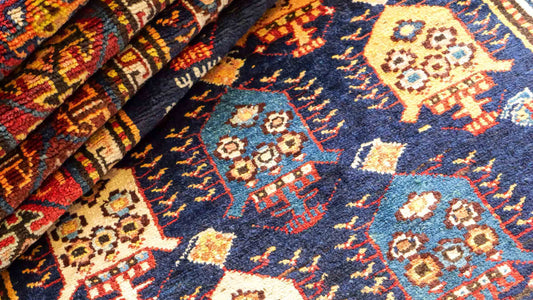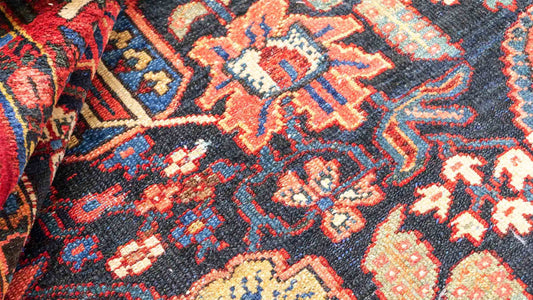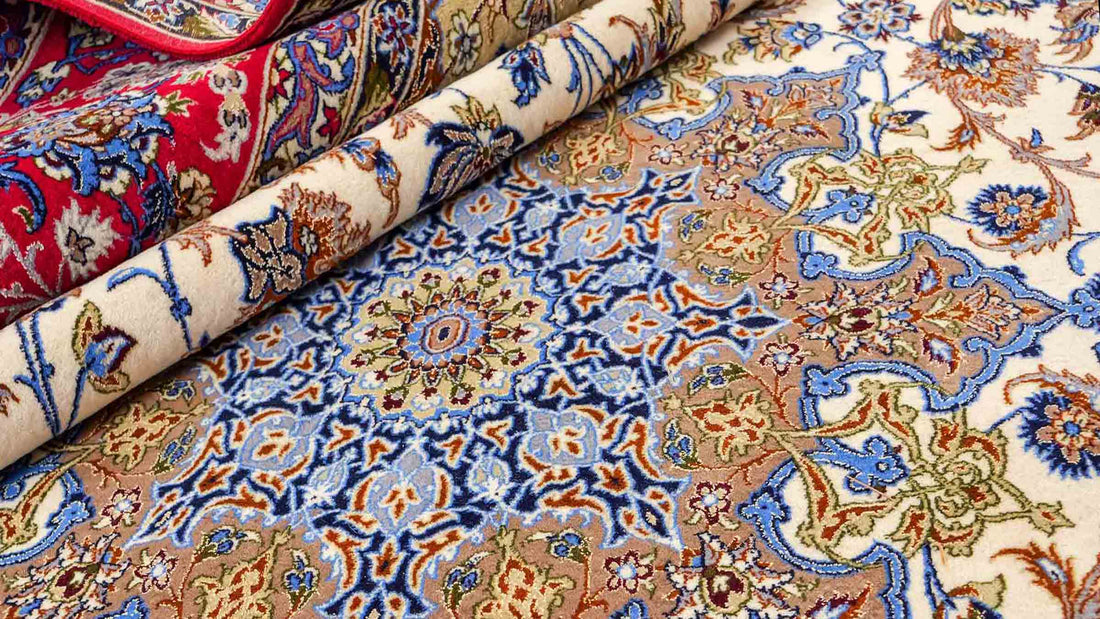
Isfahan
Daniel KhademiIsfahan carpets, from one of the most beautiful and historically significant cities in Iran, are renowned well beyond the country's borders for their exquisite craftsmanship and attention to detail in design. Famous for their unique blend of tradition and innovation, these carpets are not only luxury items but also essential elements of Persian identity. In this article, we will delve into the geographical and historical backgrounds, the intricate production process, the unparalleled design diversity, and the value of these handcrafted masterpieces.
Geography: Isfahan – The Heart of Persia
Isfahan is located in the heart of Iran and is surrounded by picturesque landscapes of mountains and fertile plains. Once the capital of the Persian Empire, the city was a significant center for politics, culture, and commerce during the Safavid dynasty (1501–1722). The influence of this era is still palpable in the intricate carpets produced here.
The city is particularly renowned for its exquisite hand-knotted carpets, which are appreciated for their fine craftsmanship and high-quality materials. The carpet art in Isfahan represents an innovative synthesis of traditional patterns and modern designs, reflecting the rich culture and history of the region. Isfahan is also impressive for its Islamic architecture, including the stunning Imam Mosque and the Naqsh-e Jahan Square, which is designated as a UNESCO World Heritage site. These buildings are architectural masterpieces characterized by intricate tile work and magnificent interiors.
Isfahan also boasts stunning Islamic architecture, including the impressive Imam Mosque and the UNESCO World Heritage-listed Naqsh-e Jahan Square. These buildings are masterpieces of architecture, featuring intricate tilework and sumptuous interiors.
Additionally, the city is known for various crafts such as ceramics, miniature painting, and metalwork. The souks of Isfahan are a true paradise for artisans, where one can find not only carpets but also local specialties and souvenirs. Isfahan also offers a rich culinary diversity, featuring dishes like Biryani and Kebab, which excel in flavors and presentation. The Zayandeh Rud River, which flows through the city, is lined with elegant bridges such as the Si-o-seh Pol, which are both functional and aesthetically pleasing. Overall, Isfahan combines a fascinating mix of history, craftsmanship, and culture, making it an indispensable destination for travelers.
History: A Legacy of Centuries
The carpet production in Isfahan has a long and significant history that dates back to the 16th century. During this period, the city experienced a flourishing phase under the Safavid dynasty, which greatly promoted the arts and crafts. The Safavid dynasty recognized the importance of carpets as a symbol of prestige and wealth and invested in the development of art and craftsmanship. Through royal commissions and the encouragement of talented artisans, Isfahan quickly became an outstanding center for carpet production.
The carpet weaving art in Isfahan was characterized not only by its high-quality materials but also by the diversity of designs that evolved over the centuries. Artists and craftsmen integrated new influences from various regions, leading to innovative designs and techniques. These creations were often inspired by the rich Persian mythology, flora and fauna, as well as geometric and floral motifs.
In later centuries, the city produced a variety of stylized patterns that represented both traditional and novel approaches in carpet art. This development is reflected in the high aesthetic spectrum that defines the carpets; they are known for their detailed craftsmanship, vibrant colors, and harmonious designs.
The extraordinary quality of Isfahan carpets is based on the skills of the weavers, who often bring years of experience and traditional knowledge to their craft. This makes the carpets not only beautiful but also robust and durable.
Due to this rich tradition, continuous innovation, and high standards of aesthetics and craftsmanship, Isfahan can rightly be considered the heart of Persian carpet weaving art. The carpets from Isfahan are not just everyday objects but also significant cultural artifacts found in various museums and collections around the world.
Importance in Society and Economy
For the weavers of Isfahan carpets, weaving is not just an economic activity but also a valuable cultural tradition. Carpet weaving often plays a central role in family life and strengthens community spirit. Many weavers, often women, work in family businesses where techniques and designs are passed down through generations. The craftsmanship required to produce these carpets demands years of practice and expertise. The weavers see their work as an opportunity to express their creativity and create a legacy that lasts for generations. Additionally, the shared process of weaving within families and communities fosters social bonds and promotes the exchange of skills and knowledge.
These carpets hold historical and cultural significance, as they are often associated with traditional occasions, such as weddings or festivals. In many Iranian households, Isfahan carpets adorn living spaces, embodying elegance and style. Furthermore, they are frequently part of Persian wedding rituals, where they are seen as symbols of prosperity and happiness. The carpets also reflect a variety of cultural influences and provide insight into the social values and aesthetics of the region. They serve as symbols of social status, as high-quality Isfahan carpets can achieve high prices and are often regarded as valuable heirlooms. The appreciation for this art form strengthens community identity and fosters a sense of Iranian culture.
Economically, the carpets from Isfahan hold significant importance for both the region and the national economy of Iran. They are known worldwide for their quality and beauty, making them sought-after export goods. The export of these carpets creates numerous jobs and significantly contributes to the income of the weavers and their families. Isfahan carpets also promote related industries, such as wool and dye production, creating opportunities for local merchants and exporters. International fairs and exhibitions facilitate the exchange between manufacturers and buyers, enhancing interest in these carpets in the global market.
Manufacturing: Craftsmanship, Precision and Knot Density
The production of an Isfahan carpet is an elaborate process that requires both high craftsmanship and remarkable skill. Depending on the size, knot density, and complexity of the designs, the entire production process can take several months to years.
Isfahan carpets are predominantly made from high-quality wool or in combination with silk. The authentic coloring of the wool and the selection of fine silk qualities contribute significantly to the carpets’ appeal. The wool often comes from local sheep breeding and is appreciated for its natural color and texture. Silk, on the other hand, is frequently used for the warp, fringes, and details like delicate floral patterns in the designs. The use of silk highlights the skill of the weavers, adds stylish accents, and significantly enhances the quality and value of the carpet.
Another crucial feature of a carpet's quality is the knot density, which influences not only the durability and resilience but also the fidelity to detail and complexity of the patterns. Isfahan carpets typically have a high knot density that starts at around 600,000 knots per square meter and can even exceed 1,000,000 knots in some cases. These high knot counts are the reason Isfahan carpets are particularly known for fine details and complex designs. A higher knot density results in finer, more intricate patterns and increases the robustness of the carpet, allowing it to better withstand daily wear and tear.
The entire production process involves several steps: First, the best wool and silk are carefully selected. Next comes the design phase, where the pattern is planned and sketched before the artisans begin weaving. The weavers employ special techniques to ensure uniform knot density and accurately implement the patterns. The Persian knot, used in most Isfahan carpets, allows for particularly fine workmanship.
In summary, the production, materials, and knotting techniques associated with Isfahan carpets are not only vital for their quality but also for the preservation and development of a sophisticated carpet art tradition that has grown over centuries. Each carpet production is a testament to cultural heritage, craftsmanship, and creative expression that is appreciated worldwide.
Isfahan’s design diversity: A Play of Shapes and Colors
The designs of Isfahan carpets are not only rich and complex but also deeply interwoven with the history and culture of the region. They combine various stylistic elements, achieving remarkable depth and precision. Here are the different aspects of the designs in detail:
- Medallion Designs: Medallions are an essential component of many Isfahan carpets. They generally occupy the center and are surrounded by symmetrically arranged patterns, floral motifs, or smaller medallions that further increase the complexity of the carpet. This classic arrangement emphasizes a sense of balance and equilibrium. Symbolically, the medallions often represent the sky or paradise, while the adjacent elements can be interpreted as expressions of nature. This tradition reflects the Iranian understanding of harmony between man and nature.
- Floral Motifs: Floral designs are one of the main features of Isfahan carpets, reflecting the deep appreciation of Persians for nature. These floral patterns range from large blooms centrally placed to smaller, repetitive floral motifs that cover the carpet. The depiction of flowers varies from stylized to naturalistic, capturing the beauty of flora in Iran. Popular floral motifs include roses, lilies, and tulips, which are often depicted in a stylized manner. The floral designs are often combined with flowing lines or arabesques, giving them a dynamic and lively appearance. The colors of these floral patterns are generally vibrant and produced with natural dyes, resulting in a fascinating and vivid effect.
- Geometric Patterns: In addition to floral motifs, geometric forms play a crucial role in the designs of Isfahan carpets. These patterns are often arranged so carefully that they exude a meditative quality. The geometric patterns embody a mathematical precision that holds great significance in Islamic art. The use of diamonds, circles, and other geometric shapes creates a sense of structure and harmony in the overall image of the carpet. Furthermore, geometric patterns are often combined with floral designs to create contrasting yet harmonious visual effects. This fusion of geometric and floral elements contributes to the complexity and beauty of Isfahan carpets, elevating them as true works of art.
- Tableau Designs: Tableau designs depict vibrant scenes from everyday life or nature, and can include elements such as traditional clothing, festivals, or cultural symbols. These designs provide a profound insight into the lifestyle and customs of the Iranian people. Figurative elements enrich the carpets not only in terms of visual appeal but also tell stories and convey cultural values. They lend the carpets a narrative dimension that invites viewers to delve deeper into the cultural symbolism and tradition of carpet weaving.
- Color Scheme: The color palette plays a central role in the design of Isfahan carpets and significantly contributes to their visual impact. Commonly used colors include deep red, blue, gold, green, and cream, all derived from plant-based dyes. These colors are not only aesthetically pleasing but also carry symbolic meanings deeply rooted in Persian culture. Red tones often symbolize happiness and prosperity, while blue stands for peace and spirituality. Particularly noteworthy are the subtle gradations of color found in many carpets, which add increased depth to the designs.
- Stylistic Influences: Isfahan carpets embody both traditional and regional influences, reflecting the immense diversity and evolution of carpet art in Iran. As mentioned earlier, the carpet art in Isfahan experienced significant flourishing under the Safavid dynasty, during which artistic styles and techniques were further developed and refined. More recent products are also characterized by the integration of asymmetrical elements and abstract forms, giving the carpets a modern touch while harmoniously aligning with contemporary design trends. This allows manufacturers to honor the rich history of Isfahan's carpet art while addressing current aesthetic demands.
Interior Tips for Isfahan Rugs
Isfahan rugs are rich in artistic designs and vibrant colors, making them perfect for an opulent and luxurious interior decoration. They particularly complement Victorian, Oriental, or glamorous interior styles, where they can serve as an impressive statement piece. An Isfahan rug can be placed in large, light-filled rooms, where it reflects the beauty of the space and acts as a central focal point.
When selecting an Isfahan rug, pay attention to the existing color palette and materials in your room. A bold rug can be excellently paired with neutral or muted colors on walls and furniture to create an exciting contrast. Furthermore, a harmonious combination with other textiles, such as heavy curtains and luxurious cushions, is essential to create a interplay of textures and colors that highlights the richness of the rug.
Why Is an Isfahan Rug a Good Investment?
The decision to invest in an Isfahan carpet offers numerous advantages:
- Retention and Appreciation: Due to the exceptional craftsmanship, careful material selection, and historical significance, Isfahan carpets are not only a stylish addition to any home but also a solid financial investment. Some carpets can even appreciate over time, especially if they are well-preserved and aged 20 to 30 years.
- Cultural Wealth: An Isfahan carpet is a reflection of the rich Persian culture and history. Buying such a carpet is a decision that not only enriches the home but also preserves a part of tradition. It offers not only beauty but also a deeper connection to an age-old tradition and craftsmanship passed down through generations.
- Versatility: Isfahan carpets can be used in a variety of interior styles, from classic to contemporary. Whether rustic or modern, they blend harmoniously into any setting. They add warmth and style to any room, whether in a modern loft or a traditionally furnished living room.
- Durability and Care: Hand-knotted carpets are particularly robust and durable. Their care is relatively straightforward. Regular vacuuming, occasional shaking, and professional cleaning when necessary are crucial for maintaining the length and beauty of the carpets. Thus, they can retain their splendor for many years.
- Emotional Value: Furthermore, the emotional and aesthetic value of an Isfahan carpet is priceless for many owners. Such a carpet can be more than just a piece of furniture – it often becomes a family heirloom that tells stories and creates memories. It often becomes a topic of conversation, reflects cultural awareness and appreciation of art, and can be passed down as a valuable legacy to the next generation.
You can find out more about this topic here.
Conclusion: A Timeless Heritage of Craftsmanship – Isfahan Carpets for Your Home
Isfahan carpets are a timeless symbol of exquisite taste, tradition, and craftsmanship. Their complex history, outstanding workmanship, and diversity of designs and colors make them a coveted element of interior design. Whether as a stylish decorative object or a valuable investment, they contribute to the timeless elegance of any space. Bring home a piece of Persian history and enhance the beauty of your home!

